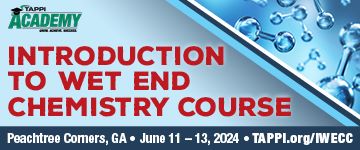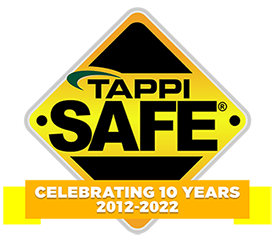 Search
Search
Use the search bar or filters below to find any TAPPI product or publication.
Filters
Content Type
Publications
Level of Knowledge
Committees
Collections
Journal articles

Magazine articles

Editorial: Lignin: Nature’s versatile polymer as a potent chemical platform for 21st century challenges, TAPPI Journal January 2019
Editorial: Lignin: Nature’s versatile polymer as a potent chemical platform for 21st century challenges, TAPPI Journal January 2019
Journal articles

Magazine articles

Influence of tensile straining and fibril angle on the stiffness and strength of previously dried kraft pulp fibers, TAPPI JOURNAL July 2018
Influence of tensile straining and fibril angle on the stiffness and strength of previously dried kraft pulp fibers, TAPPI JOURNAL July 2018
Journal articles

Magazine articles

Using online bubble size and total dissolved solids measurements to investigate the performance of oxygen delignification, TAPPI JOURNAL June 2018
Using online bubble size and total dissolved solids measurements to investigate the performance of oxygen delignification, TAPPI JOURNAL June 2018
Journal articles

Magazine articles

Dielectric spectroscopic studies of biological material evolution and application to paper, TAPPI JOURNAL September 2018
Dielectric spectroscopic studies of biological material evolution and application to paper, TAPPI JOURNAL September 2018
Journal articles

Magazine articles

Factors affecting the free shrinkage of handsheets: apparent density, fines content, water retention value, and grammage, TAPPI JOURNAL June 2018
Factors affecting the free shrinkage of handsheets: apparent density, fines content, water retention value, and grammage, TAPPI JOURNAL June 2018
Journal articles

Magazine articles

Enzymatic treated viscose fibers functionalized by chitosan, TAPPI JOURNAL August 2018
Enzymatic treated viscose fibers functionalized by chitosan, TAPPI JOURNAL August 2018
Journal articles

Magazine articles

Editorial: Shifts and gains in research funding, TAPPI JOURNAL April 2018
Editorial: Shifts and gains in research funding, TAPPI JOURNAL April 2018
Journal articles

Magazine articles

Toward valorization of lignin: characterization and fast pyr
Toward valorization of lignin: characterization and fast pyrolysis of lignin recovered from hot-water extracts of electron-beam irradiated sugar maple, TAPPI JOURNAL April 2017
Journal articles

Magazine articles

Lignin carbon fiber: The path for quality, TAPPI JOURNAL Ma
Lignin carbon fiber: The path for quality, TAPPI JOURNAL March 2017
Journal articles

Magazine articles

Editorial: Lignin: Today and tomorrow, TAPPI JOURNAL March 2
Editorial: Lignin: Today and tomorrow, TAPPI JOURNAL March 2017






